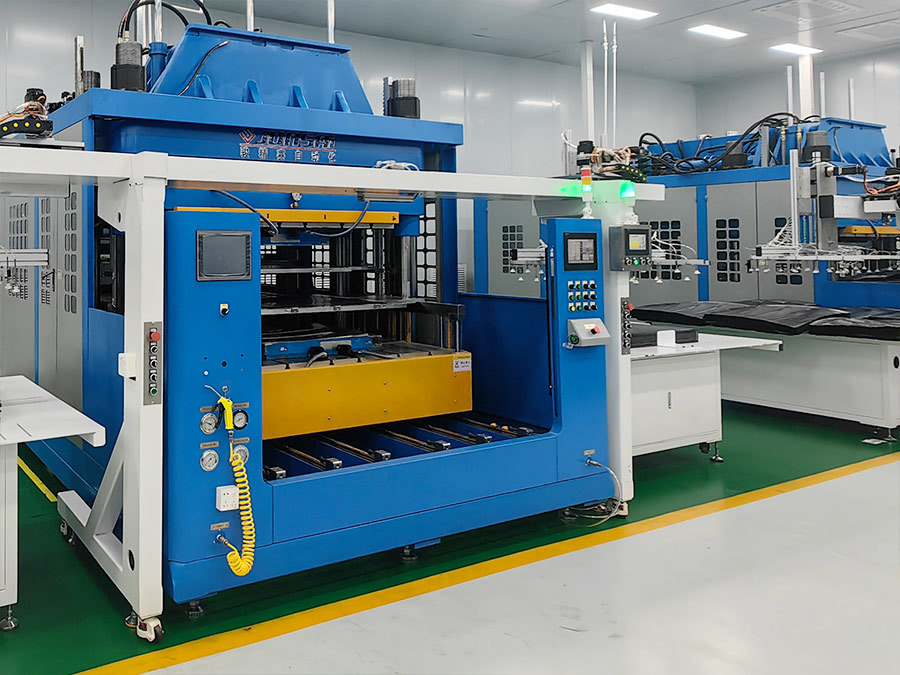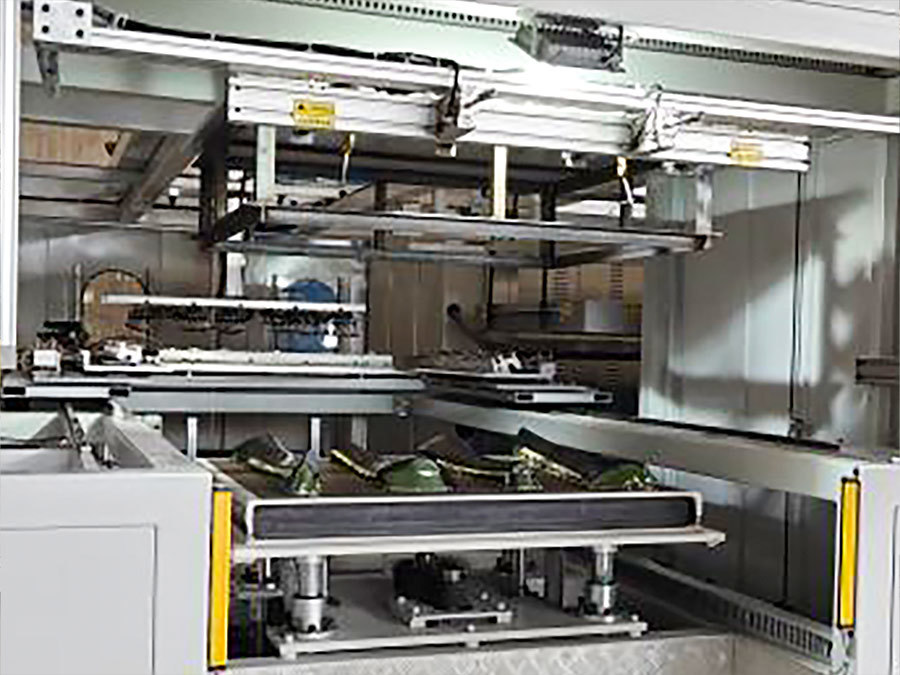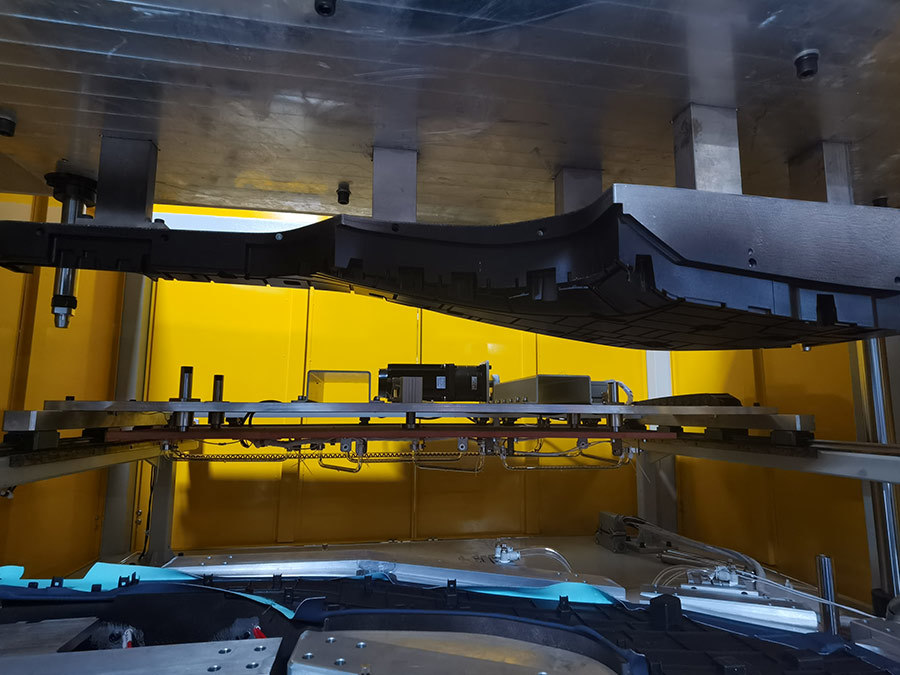The Best Pressure Thermoforming Machine: A Solution for Diverse Industries
2025-07-23
The Best Pressure Thermoforming Machine: A Solution for Diverse Industries
Table of Contents
1. Introduction to Pressure Thermoforming Machines
2. How Pressure Thermoforming Works
3. Advantages of Pressure Thermoforming Machines
4. Key Applications Across Industries
5. Important Features to Consider When Choosing a Machine
6. Top Pressure Thermoforming Machines on the Mark
The Best Pressure Thermoforming Machine: A Solution for Diverse Industries
Table of Contents
- 1. Introduction to Pressure Thermoforming Machines
- 2. How Pressure Thermoforming Works
- 3. Advantages of Pressure Thermoforming Machines
- 4. Key Applications Across Industries
- 5. Important Features to Consider When Choosing a Machine
- 6. Top Pressure Thermoforming Machines on the Market
- 7. Maintenance Tips for Thermoforming Machines
- 8. The Future of Pressure Thermoforming Technology
- 9. FAQs
- 10. Conclusion
1. Introduction to Pressure Thermoforming Machines
Pressure thermoforming machines have emerged as fundamental tools in manufacturing, enabling the creation of complex shapes and designs with high precision. These machines use a combination of heat and pressure to mold plastic sheets into specific forms. This process is particularly beneficial for industries that require high-quality, robust products. From packaging to automotive components, pressure thermoforming has become integral in producing items that meet rigorous standards.
2. How Pressure Thermoforming Works
The pressure thermoforming process begins with a plastic sheet being heated until it becomes pliable. Once it reaches the desired temperature, the sheet is then placed over a mold. **Air pressure** is applied to the heated sheet, forcing it into the mold's contours. This method not only shapes the material but also ensures that it maintains a uniform thickness, enhancing the final product's integrity.
This process can be broken down into several key steps:
- **Heating**: The plastic sheet is heated evenly, ensuring maximum pliability.
- **Forming**: The heated sheet is drawn onto the mold using vacuum or pressure, ensuring every detail is captured.
- **Cooling**: Once formed, the part is cooled to set its shape.
- **Trimming**: The excess material is trimmed away, resulting in a finished product ready for further processing or packaging.
3. Advantages of Pressure Thermoforming Machines
Pressure thermoforming machines offer numerous advantages that make them a popular choice in various industries:
3.1 Enhanced Product Quality
The use of pressure ensures that the material uniformly fills the mold, leading to high-quality products with consistent dimensions.
3.2 Versatility in Material Use
These machines can work with a wide range of materials, including various plastics, allowing manufacturers to choose the best material for their specific applications.
3.3 High Production Efficiency
Pressure thermoforming can produce parts quickly, significantly reducing production times and allowing for high-volume manufacturing.
3.4 Cost-Effectiveness
Compared to other forming methods, pressure thermoforming can be more economical, especially for larger production runs. The reduced labor and material waste contribute to overall cost savings.
4. Key Applications Across Industries
The versatility of pressure thermoforming machines makes them suitable for various industries:
4.1 Packaging Industry
In packaging, pressure thermoforming is widely used to create containers, trays, and clamshells. The ability to produce intricate designs while ensuring product safety is crucial in this sector.
4.2 Automotive Industry
Automakers utilize pressure thermoforming to create interior components, dashboards, and other parts that require precision and durability.
4.3 Medical Sector
In the medical industry, pressure-formed components are used for trays, packaging, and housings for medical devices, where sterility and quality are of utmost importance.
4.4 Electronics and Appliances
Thermoforming is also prevalent in producing housings for electronic devices and appliances, ensuring they are both functional and aesthetically pleasing.
4.5 Construction and Building Materials
Pressure thermoforming machines are employed to create panels and barriers in construction, offering lightweight yet strong solutions.
5. Important Features to Consider When Choosing a Machine
Selecting the right pressure thermoforming machine involves evaluating several critical features:
5.1 Size and Capacity
Consider the machine's size and its capacity to handle the volume of production you require. Larger machines can accommodate bigger sheets, but ensure they fit your workspace.
5.2 Control Systems
Advanced control systems offer precise temperature and pressure management, crucial for producing high-quality products. Look for machines with user-friendly interfaces.
5.3 Material Compatibility
Ensure that the machine supports the types of materials you plan to work with. Some machines are designed for specific plastic types, while others offer greater versatility.
5.4 Energy Efficiency
Energy-efficient machines can significantly reduce operational costs. Consider models that utilize advanced energy-saving technologies.
5.5 Maintenance Requirements
Evaluate the maintenance needs of the machine. Regular maintenance is essential to prolong its lifespan and ensure consistent performance.
6. Top Pressure Thermoforming Machines on the Market
Several manufacturers have established themselves as leaders in the pressure thermoforming machine industry. Here are some top options:
6.1 Machine A
Machine A is known for its high-speed performance and exceptional energy efficiency. It offers advanced control systems and can handle a wide range of materials.
6.2 Machine B
Machine B specializes in producing lightweight yet durable products, making it ideal for the automotive and aerospace industries.
6.3 Machine C
Machine C features innovative technology that minimizes material waste while maximizing production efficiency. It’s perfect for high-volume production environments.
6.4 Machine D
Machine D stands out for its user-friendly interface and robust customer support, making it a go-to choice for newcomers to thermoforming technology.
6.5 Machine E
Machine E is renowned for its versatility, able to process a multitude of materials while maintaining high-quality standards.
7. Maintenance Tips for Thermoforming Machines
Proper maintenance of pressure thermoforming machines is crucial for their longevity and performance. Here are essential maintenance tips:
7.1 Regular Cleaning
Dust and debris can affect machine performance. Regularly clean the machine and its components to prevent buildup.
7.2 Lubrication
Ensure that all moving parts are properly lubricated to reduce friction and wear over time.
7.3 Monitoring Temperature and Pressure
Regularly check temperature and pressure settings to maintain optimal performance. Calibration may be necessary to ensure accuracy.
7.4 Scheduled Inspections
Conduct regular inspections as part of a preventive maintenance program. Look for signs of wear or damage that could lead to breakdowns.
7.5 Training Operators
Well-trained operators can spot issues early and maintain the machine efficiently. Invest in training for your team to ensure they understand the machine’s operation and maintenance.
8. The Future of Pressure Thermoforming Technology
The future of pressure thermoforming technology is promising, with advancements in materials, automation, and efficiency. Emerging innovations include:
8.1 Smart Technology Integration
The integration of IoT (Internet of Things) allows machines to communicate and optimize their performance in real-time, resulting in more efficient operations.
8.2 Sustainable Materials
As industries move towards sustainability, the development of biodegradable and recyclable materials for thermoforming will gain traction, providing eco-friendly alternatives.
8.3 Enhanced Customization
Future machines are likely to offer greater customization options, enabling manufacturers to create unique designs and sizes tailored to specific market needs.
8.4 Automation and Robotics
The increasing use of automation and robotics will streamline production processes, reduce labor costs, and improve precision in thermoforming operations.
9. FAQs
9.1 What materials can be used in pressure thermoforming?
Pressure thermoforming can utilize various materials, including PVC, PET, PS, and polycarbonate. The choice of material depends on the desired properties of the final product.
9.2 How does pressure thermoforming compare to vacuum thermoforming?
Pressure thermoforming uses air pressure to ensure better material distribution and thickness uniformity, while vacuum thermoforming relies on atmospheric pressure. This often results in superior quality in pressure thermoforming.
9.3 What industries utilize pressure thermoforming machines?
Industries such as packaging, automotive, medical, electronics, and construction extensively use pressure thermoforming machines for producing high-quality components.
9.4 What is the average lifespan of a pressure thermoforming machine?
With proper maintenance, a pressure thermoforming machine can last anywhere from 10 to 20 years, depending on usage and care.
9.5 How can I choose the right pressure thermoforming machine for my business?
Consider factors such as production volume, material compatibility, operational efficiency, and maintenance requirements when selecting a machine.
10. Conclusion
In conclusion, pressure thermoforming machines have established themselves as indispensable tools across various industries. Their ability to produce high-quality, complex shapes quickly and efficiently makes them a preferred choice for manufacturers. When selecting a machine, it is essential to consider factors such as size, material compatibility, and features that align with your production needs. As technology advances, the future of pressure thermoforming promises even greater efficiency and sustainability, ensuring it remains at the forefront of manufacturing innovation. Whether you are in packaging, automotive, or medical applications, investing in the right pressure thermoforming machine can significantly enhance your production capabilities and product quality.
Keywords:
Related information
The Best Pressure Thermoforming Machine: A Solution for Diverse Industries
The Best Pressure Thermoforming Machine: A Solution for Diverse Industries
Table of Contents
1. Introduction to Pressure Thermoforming Machines
2. How Pressure Thermoforming Works
3. Advantages of Pressure Thermoforming Machines
4. Key Applications Across Industries
5. Important Features to Consider When Choosing a Machine
6. Top Pressure Thermoforming Machines on the Mark
2025-07-23
Discover the Benefits of China Small Vacuum Forming Machines: A Comprehensive Guide
Vacuum forming is a widely used manufacturing process that involves heating a thermoplastic sheet until it becomes pliable and then shaping it around a mold using vacuum pressure. The process is particularly popular in industries such as packaging, automotive, and consumer goods due to its efficiency and versatility. A small vacuum forming machine, especially from China, provides many advantages f
2025-07-22
Unlocking Efficiency: Maximizing Productivity with Wholesale Semi Automatic Vacuum Forming Machines
Unlocking Efficiency: Maximizing Productivity with Wholesale Semi Automatic Vacuum Forming Machines
Table of Contents
Understanding Vacuum Forming: An Overview
What is Semi-Automatic Vacuum Forming?
Benefits of Using Semi-Automatic Vacuum Forming Machines
Wholesale Purchasing Advantages for Businesses
Increased Productivity and Efficiency in Production
Cost-Saving Benefits
2025-07-21












